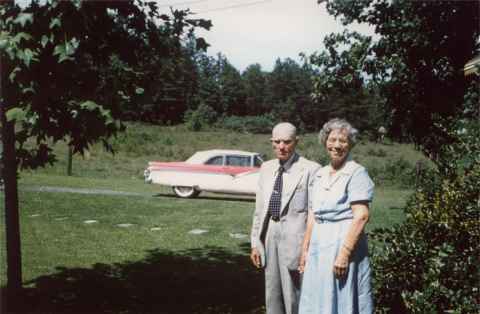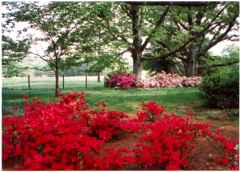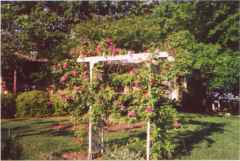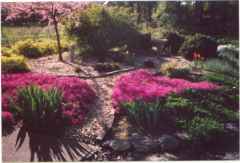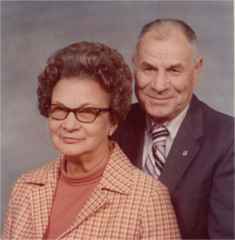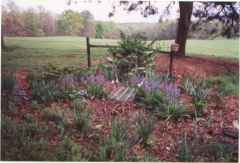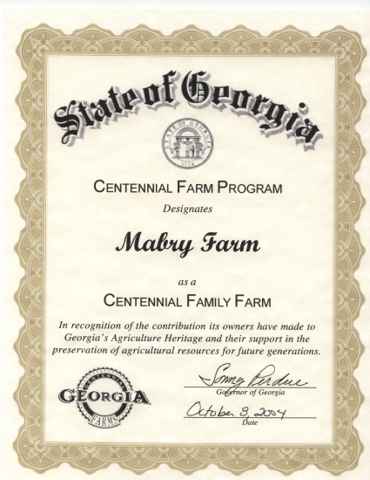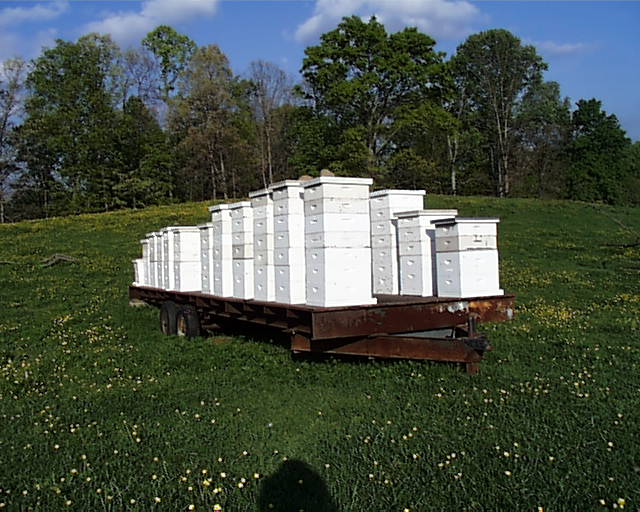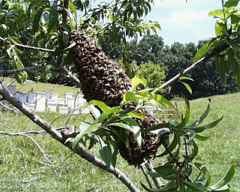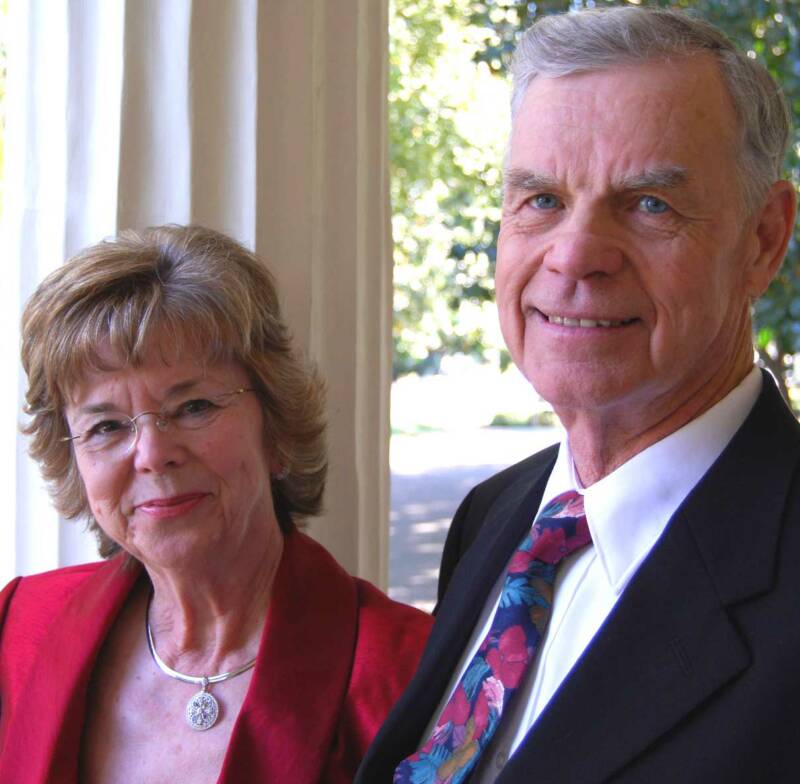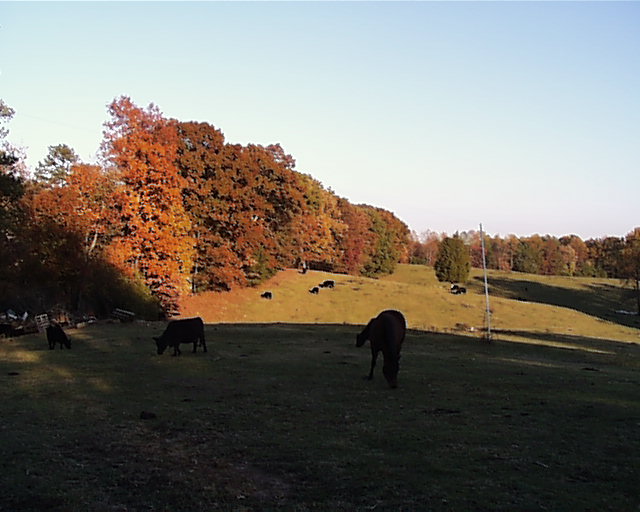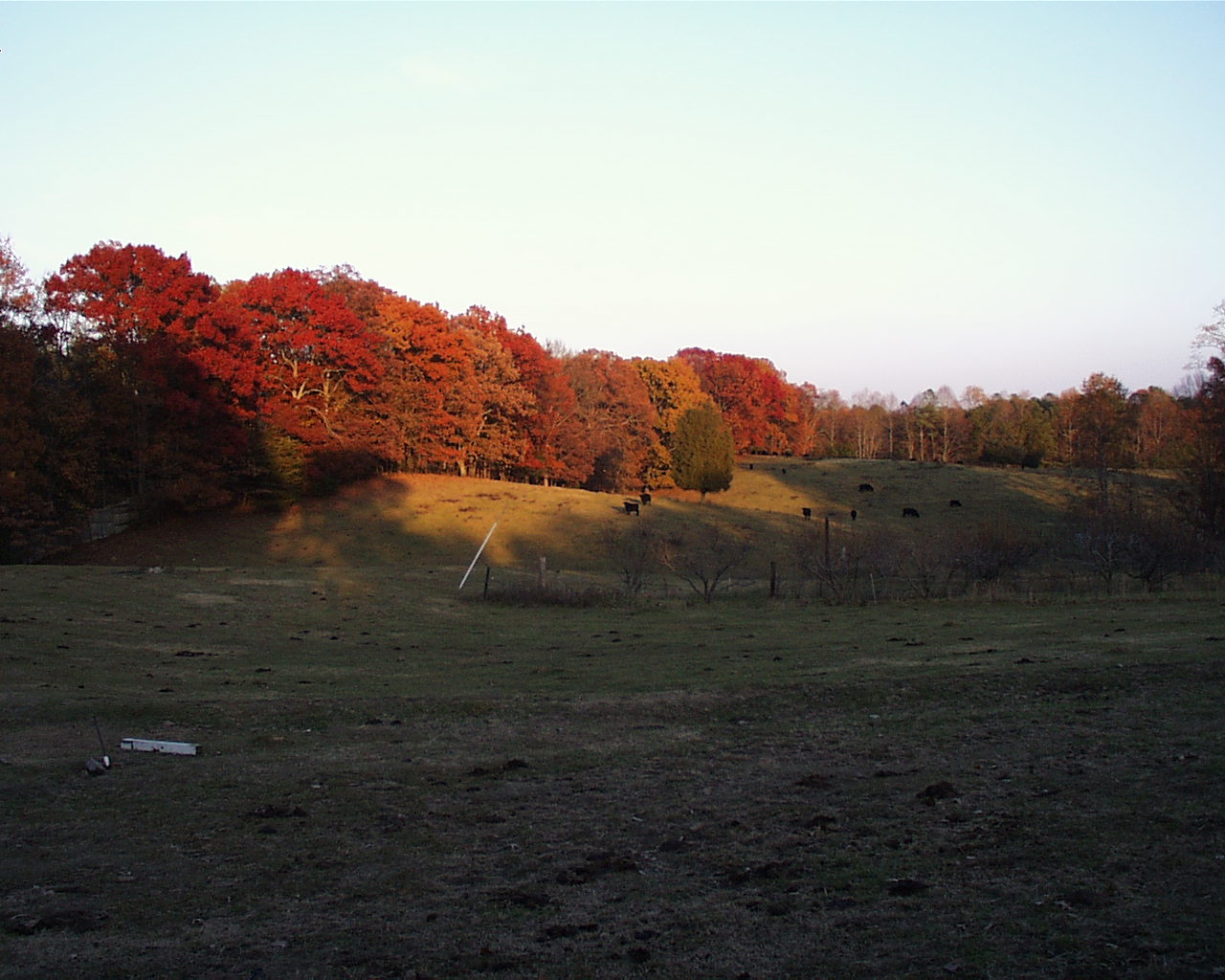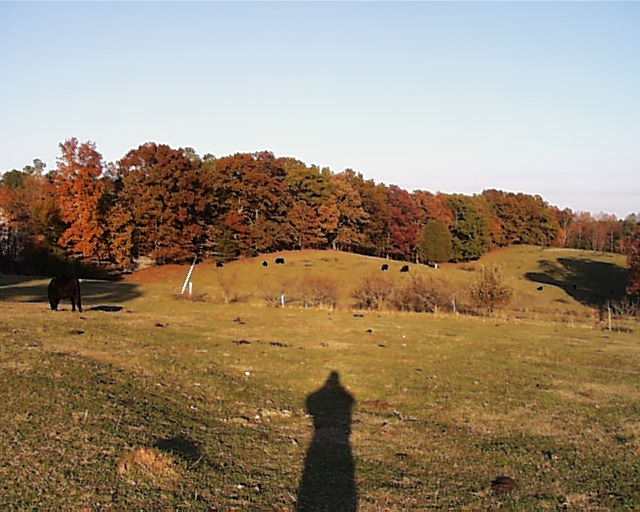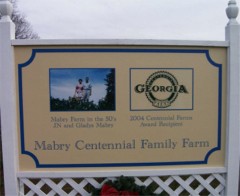Land Lot 178 located in NE Cobb County, was purchased in 1904 for $100 by my grandfather, Virgil Mabry. By 1914, he and his brother, Harley Mabry, had acquired 180 additional acres making a 220-acre farm. Virgil sawed the timber on the 40 acres and used some of the lumber to build a farmhouse. Virgil borrowed the money and purchased Harley's interest in 1918. Virgil grew cotton, corn to feed the farm animals, and a vegetable garden to feed his family. He operated a dairy, hauling the milk 30 miles to Atlanta and sold the milk and char-coal he had burned door to door until 1925. In 1936 Virgil was severely injured in a sawmill accident; the doctor at the hospital left him in a room for three hours waiting for him to die. When he did not die, he was admitted to the hospital and his head wound was cleaned and bandaged. He was not able to work for the next 2 years but he recovered from the injury. After the accident, Virgil used all his savings making the mortgage payments. In 1942, behind on the mortgage payments, Virgil called a meeting of his five children and asked them to pay the mortgage payments. My father, J. N. Mabry, made the first payment even though he had two small children and his wife (my mother) had to wash all their clothes on a rub board. After my father used the family savings to make a mortgage payment, my mother went to Sears and Roebuck and purchased a washing machine on credit. My aunt Edna Mabry Dean made the second payment. The other children decided not to make any mortgage payments. J N and Edna paid the mortgage off during the next 3 years. After the mortgage was paid off in 1945 the farm was deeded to my father, J.N. Mabry, and his sister, Edna Mabry Dean, Virgil and Mamie Mabry retained a life estate in the farm and continued to grow corn and soybeans until 1960. In 1946 the timber was once again cut from the farm and some of it was used to build the second farmhouse. In 1961, J. N. Mabry and Edna Dean divided the 180-acre farm with each getting 90 acres. In the early 1950's, J. N. Mabry converted his half of the farm to a beef cattle operation. In the late 1970's, Jim Mabry took over the beef cattle operation and added honeybees. In 1987 my mother Gladys Mabry built the third farmhouse. Today, there are 44 acres in the Mabry Farm consisting of A beef cattle and horse boarding operation and honeybees.
There have been a lot of changes in North East Cobb County in the last 116 years. There are now 3 generations of the Mabry Family who call the Mabry Farm their home.
Jim Mabry
HISTORY OF MABRY FARM
Virgil Norris Mabry was born May 4, 1882 in Cobb County, Ga. In 1904 he Purchased Land Lot 178 located in NE Cobb County for $100. This was 2 years before he was married. Virgil married Mamie Morgan on November 26 1906.
After he was married, he and his brother Harley Mabry formed a partnership and started purchasing additional farm land while raising a family. J N Mabry was born July 13, 1909 in Cobb County. In 1913 a tornado destroyed their church Wesley Chapel Methodist Church. Mamie and her 3 small children were in a house near the church and she watched as the tornado passed near her house on its way to the church. In 1914, Virgil and Harley contracted to rebuild Wesley Chapel Church for $633.
In 1914, he and his brother, Harley Mabry, had acquired 180 additional acres making a 220-acre farm. Virgil and Harley sawed the timber on the 220 acres and used some of the lumber to build each of them a farmhouse in 1914. Virgil and Mamie's farm house only had a dug well that water had to be drawn from using a rope and windlass. Thirty six years later a pump was installed and water was piped to the back porch. The house did not have an indoor bathroom until 96 years later when Virgil's great, great grand daughter Kelley Martin converted the house into a building that the family's of teenagers who were taking horse riding lessons and using the riding ring could gather and visit with each other while their girls were riding in the riding ring that Kelly had built 2 years earlier.
In 1916, Harley decided to stop farming and work in construction and be a lay preacher. Harley had stopped farming and wanted to sell his half of the farm. Virgil borrowed the money and purchased Harley's interest in Mabry Farm.
In 1918, Virgil grew cotton, which had to be picked by hand, corn and soybeans to feed the farm animals, and a vegetable garden to feed his family. In 1915, Virgil started operating a dairy. There was no electricity for lighting, the only light was from a lantern. All the cows had to be milked by hand each morning and night. In the summer, the milk had to be kept cool with ice that was purchased from Tommy Garrett's store which was 1 mile from the farm. Butter was made by putting 20 gallons of clabbered milk in a wooden churn that had a rounded bottom. The churn was pushed down and pulled up causing the clabbered milk to splash from side to side which would make butter form on the top of the milk. After the butter was removed what was left was butter milk. The butter, butter milk and raw milk was hauled by wagon 30 miles to Atlanta and sold along with charcoal that Virgil had burned on the farm. Virgil had a door to door route that he would run each week.
In the summer ice had to be used to keep the milk from spoiling while traveling to Atlanta. In 1925, Virgil sold the dairy cows. After Virgil sold the dairy cows, he and his sons, J N and Claude, operated a saw mill cutting timber for his neighbors. The sawmill was powered by a steam engine. It was J N and Claude's job to start the fire in the steam boiler each morning at 4 AM. The saw mill had to be moved each time the timber was cut from a track of land. The sawmill and steam boiler were very heavy and had to be moved by man power.
Saw milling was hard back breaking work. The logs had to be cut with a crosscut saw and pulled to the saw mill with a mule. During the depression, Virgil was able to provide food for his family and only pay the interest on the farm loan. For most of Virgil's life, a farm family had to provide most of the food they used. There was only a country store to purchase food if you had the money to purchase it.
They raised a garden that produced all the vegetables they ate. They canned a supply of vegetables to last thru the winter. Virgil loved pies and wanted one every day. He planted apple, peach, plum and current trees. Blackberry vines grew wild, but Virgil planted some special blackberry vines that would produce large black berries, they turned out to be an invasive plant that you could not get rid of. Virgil's descendants are still trying to stop them from growing on Mabry farm. They raised chickens for eggs and a Sunday dinner of fried chicken on special occasions. Sorghum syrup cane was raised and the juice was squeezed from it and cooked to make sorghum syrup. Honeybees were kept to provide honey to eat with biscuits at breakfast and to use as sweetener in other things. Hogs were raised to provide meat for breakfast and lard that was used to fry chicken and pork chops. Cracklings were produced when the lard was cooked from the fat meat, they were added to the corn bread mix to make crackling corn bread.
J N told this story about his dad Virgil. He had a T model ford car and one summer day he was trying to crank it. The T model had to be cranked by inserting a crank handle into a opening in the front of the car and turning it. It was hard to turn. After trying for a long time to crank the car he was exhausted and while resting before trying to crank the car again, he rubbed his fist on the hood of the model T and said if you had life in you, I would make you move.
In 1935, J N married Gladys Dickerson and in July of 1936, Jim Mabry was born in the Mabry farm house. There was no money to pay for a hospital delivery. Jim cried for 1 week without stopping, during that week the coldest daytime high temperature for July of 62 degrees was set. They built a fire in the fire place in the room that Jim was in.
In the spring of 1936 Virgil was severely injured in a sawmill accident. J N put Virgil in their car and drove it so fast carrying Virgil to the hospital in Marietta that the car overheated. The doctor at the hospital left him in a room for three hours waiting for him to die. When he did not die, he was admitted to the hospital and his head wound was cleaned and bandaged. He was not able to work for the next 2 years, but he recovered from the injury.
It took a person with special talents to run a saw mill. The (sawmiller) had to look at a log and determine what size boards to cut in order to get the most lumber from each log. Virgil was the sawmiller and the saw mill could not run very well without him. After the accident, which was in the spring time, not much cotton was planted, with no income except the small amount he got from the cotton crop. Virgil used all his savings making the mortgage payments.
During the time Virgil was injured and unable to work, his teenage daughter Sara had to plow the crops. In 1942, behind on the mortgage payments, Virgil called a meeting of his five children and asked them to pay the mortgage payments. My father, J. N. Mabry, made the first payment even though he had two small children and his wife Gladys had to wash all their clothes on a rub board. After J N used the family savings to make a mortgage payment, his wife Gladys went to Sears and Roebuck and purchased a washing machine on credit. My aunt Edna Mabry Dean made the second mortgage payment. The other children decided not to make any mortgage payments. J N and Edna told Virgil if he would deed the farm to them they would pay the loan off. They paid the mortgage off during the next 3 years.
After the mortgage was paid off in 1945, the farm was deeded to my father, J.N. Mabry, and his sister, Edna Mabry Dean. Virgil and Mamie Mabry retained a life estate in the farm and continued to grow corn and soybeans until 1960. In the spring of 1945, J N built a one room building that later became the garage, and moved his family into it. The bathroom was outside and water had to be drawn from the well that Harley had dug 31 years earlier. The first purchase after the building was built was a milk cow and a small barn was built. The cow provided milk and butter for the family and produced a calf every 14 months to provide meat for the family. A hog was raised each year and butchered to provide meat and lard for the family.
It was Gladys and Jim's job to milk the cow each morning and night because J N worked in Atlanta doing construction work and had to leave before daylight and got home late in the day. The family had to be self sufficient because there was not a grocery store near by. The building was built in a wooded area and snakes could get in. One day Gladys opened a cabinet drawer and there was a snake lying in the drawer. From time to time, snakes could be seen resting on the 2x4 framing of the house.
In 1946, the timber was once again cut from Mabry farm by J N and Robert Dean, Edna 's husband, and some of it was used to build the second farmhouse. The farm house was built on the same site where Harley had built his house which burned after he sold his part of the farm to Virgil. It was a good location for a house because it had the trees planted by Harley and a well.
With the completion of the farm house the J N Mabry family had running water and a bathroom in the house for the first time. In 1961, J. N. Mabry and Edna Dean divided the 180-acre farm ( 40 acres had been sold to friends) with each getting 90 acres. In the early 1950's, J. N. Mabry converted his half of the farm to a beef cattle operation. Most of the fields that once produced corn and cotton had grown up with trees and the trees had to be removed using a bull dozer. Fences were built around most of the 90 acres and grass was planted for the cows to eat
On October 12, 1957, Jim married Levada Crowder and they started a family. Julie Mabry Stephens was born October 6 1958 and Chris was born August 26, 1962. Jim had worked in construction during the summers when he was in high school. In 1960 after being laid off from Lockheed aircraft company, Jim constructed his and Levada's home in land lot 177 and learned a trade. He worked in construction, building commercial buildings until he retired in 2004.
It has been their home for the past 57 years. In 1964 Jim had a lake built in land lot 178 and fish were stocked in it. It served as a place for the cows to get water and cool off on hot days in the summertime as well as a place for the family to go fishing and swimming. In the late 1970's, Jim Mabry took over the beef cattle operation. Jim had added honeybees to the farm in the late 1960's. In 1986, 20 areas of the farm was sold and the proceeds divided with the children and grand children of J N and Gladys. In 1987 Gladys Mabry and her daughter, Betty Pettett, built the third farmhouse across the road from the original farm house.
Jim worked in the construction industry. He and his wife Levada and their 2 children, Julie and Chris, did all the farm work in the evenings and on the weekends
Jim retired from construction work in 2004 and started a pick your own blackberry, blueberry, fig and muscadine farming operation. We grew tomatoes and sweet corn that was sold to supplement our income. In 2007 the cattle were sold and Levada started a horse boarding operation . The horses are a lot easier to keep in the fences than the cows were. Levada had always wanted to look out their kitchen window and see a barn with a red roof with horses grazing in the pasture. In 2013 Levada had a new barn erected for the horses. On October 12, 2020, Levada and Jim will celebrate their 63th wedding anniversary. For the past 63 years neither Jim or Levada have wanted to leave Mabry Farm to live anywhere else.
